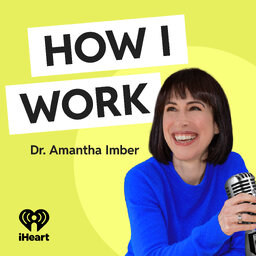Quick Win: The science of a 5-minute workout, with CAROL CEO Ulrich Dempfle
When you hear how short Ulrich Dempfle’s workouts are, you might think he’s not doing enough…
Ulrich is the co-founder and CEO of CAROL, a company that makes AI-powered exercise bikes designed to make you as fit as possible in as little time as possible. And when they say as little time as possible, they’re not joking - their workouts are less than nine minutes long!
And somehow, in just five minutes a day, a few days a week, Ulrich has seen his cardiovascular fitness skyrocket him from the 50th percentile for his age, to the top 5 percent. He knows what you’re thinking, too - it sounds too good to be true.
That is, until you hear the science behind it.
Ulrich goes deep on the science behind “reduced exertion high intensity interval” training, or REHIT, and how it aligns with what we already know about exercise science.
Connect with Ulrich on LinkedIn or find out more about the CAROL Bike
You can find the full interview here: https://amantha.com/podcasts/this-ceo-became-fitter-than-ever-with-5-minute-workouts-heres-how/
My new book The Health Habit is out now. Order your copy here
Connect with me on LinkedIn and Instagram.
For more life-improving tips, sign up for my weekly newsletter at howiwork.co.
Questions or feedback? Email me at amantha@inventium.com.au.
Credits:
Host: Amantha Imber
Sound Engineer: Martin Imber
 How I Work
How I Work


